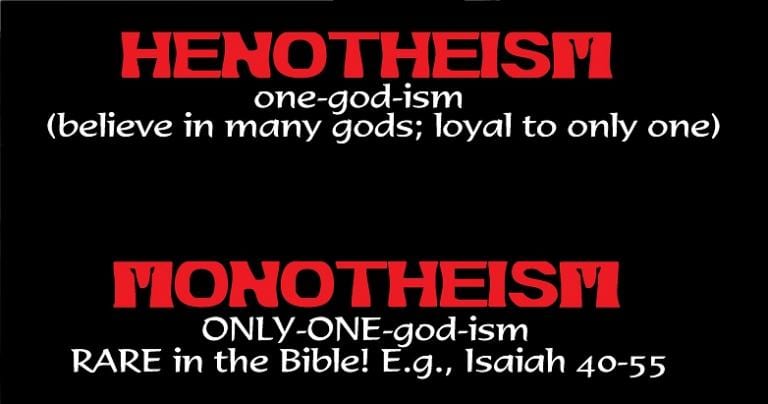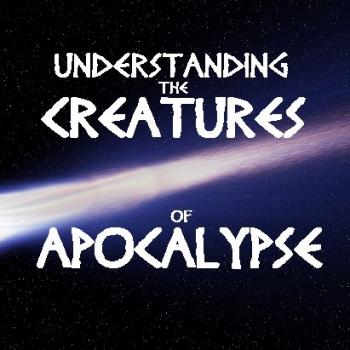
Satan, and our understanding of him, shows that doctrine develops and theology evolves.
Satan just isn’t what he used to be! The devil (diabolos in Greek) wasn’t always what he is today. At one point, the devil and Satan were two different persons. Moreover, that talking snake of Genesis was still another person. But by the time we reach the New Testament, all these three other-than-human persons had become one and the road was set for a Christian take on the Evil One.
Strange, huh? Not really. Theology develops.
That Mischievous Talking Snake was No Devil!
A long time ago in a Middle Eastern land far, far away, David became king over Israel. His new empire consisted of all twelve Israelite tribes. His people needed many things, and among the most important was a story which explained just how this came about. David’s court storyteller, a man scholars refer to as the “Yahwist” (“J” tradition), collected and edited Israelite traditions and molded them into something new. Around 950 BCE, he brought out the official truth of David’s ascendancy.
This, of course, would become the oral narrative that would give rise, eventually, to the core of the Bible. Within the Yahwist’s story was collected a most ancient idea and personage: Ha’Nachash, the talking serpent.
Originally this spirit wasn’t evil. Ha’Nachash was at first only a mischievous spirit. That he lurks about a tree hints at truly ancient origins. Long before Israelites or even their Habiru forebearers, stories of talking shamanic power-animals like dragons can be traced back 50,000 years ago to Aboriginal myths. Serpents and dragons dwelling about the roots and middle of the World Tree are found in mythologies all over the world.
What About the Devil? Satan?
You might be thinking right now something along the lines of, “Wait a minute! I thought that talking snake was Satan, the Prince of Lies, the Evil One!” Sorry to burst your bubble but not back in 950 BCE. We are too early for that sort of notion.
From our vantage in 2019 AD, we Christians now think of the word satan (from the Hebrew śāṭān) as a proper name (“Satan”) designating the personification of evil. Ask almost anyone in the Church and they will inform you that he is identical with Lucifer, the devil, the fallen angel, the talking serpent from Genesis 3 and primordial Dragon in Revelation (Revelation 12:7-9). They can say that because we stand significantly upriver from a confluence of two thousand years of flowing time, traditions, and theological developments. It wasn’t always so.
The late Biblical scholar Raymond Brown informs us that, prior to the 4th century BCE, belief in a “devil” was lacking among the Israelites. After the Babylonian captivity, however, a tidal wave of Persian influences poured into Israel. From this cultural upheaval came beliefs in hordes of demons and a principle of evil.
Persia—Origin of Satan and Devil
Let’s time travel back to 400 BCE. This is when we first encounter in Israelite writings the two very different ideas and persons, “devil” and “satan.” Like the serpent back in 950 BCE, ha’shatan (literally, “the satan” meaning “adversary”) was not originally an evil person. He just had a sucky profession. Back in the fourth century BCE he was not yet thought of as “the devil” from our doctrine. At that early time, the satan was one other-than-human person, and the devil was a completely different other-than-human person.
Ha’shatan was originally a Persian concept. So were the angels. So also, the devil. They made up God’s constellational fancy entourage in the sky. That part of the world speaks Farsi which sounds a lot like Pharisee, the sect of first century Israelites who accepted the existence of all these sky beings.
The Toughest Job in the Universe
Satan was originally the title of an office of one of God’s sky servants. It described his function. God’s sky court was imagined like the Persian court below on earth. The Persian court had an officer called the satan who acted as a secret agent for the throne. He was the honor-tester of the court who spies on behalf of the Persian ruler. He ventured out disguised as a peasant and tested the loyalty of the king’s subjects.
The satan would then earn the trust of peasant villagers and inquire about their musings on the king. Should a peasant dare respond with something dishonorable concerning the king, the satan would reveal himself as the king’s official, and the poor wretch would be hauled away in shame.
We see this Middle Eastern institution well into our times with King Abdullah II bin Al-Hussein of Jordan. When the new king took the thrown, he disguised himself as a common man, and blended in with the lower classes. He wanted to know their honest opinion of various Jordanian people concerning his government officials. Once told, he revealed himself, and thanked his citizens.
The Enduring Understanding of Satan
The earlier understanding of the satan as God’s official honor tester is important for grasping what Middle Eastern peoples mean when they call the United States “the greater satan” and the Russian Federation as “the lesser satan.” The idea is that God is using these powers to test Iran or some other Middle Eastern country.
The Middle Eastern comedy called “Job” sees God through a Persian lens (see Job 1-2). Like most authors of scripture, the man who wrote Job was not a monotheist but a henotheist. As we have mentioned before, monotheism is rare in the Bible. It evolved slowly.

You can find the satan as honor tester in many Scriptures, from Job through the temptation narratives (Mark 1:12-13 // Matthew 4:1-11 // Luke 4:1-13) in the Gospels. Well after the merger of the satan and devil and serpent, the idea of the satan as honor tester stayed on the forefront of its meaning. When Paul uses the term satan (2 Corinthians 12:7b-9), he means just that, an honor tester. You see the same idea in both versions of the Lord’s Prayer (Matthew 6:13; Luke 11:4).
Three Merge into One
Eventually all three other-than-human persons merged into one. By then the mischievous talking serpent had grown into a colossal sky dragon, consisting of the constellations Libra (seven heads) and Scorpio (tail). Along with this a sky lore had evolved concerning this evil sky dragon, now properly named Satan. Apparently he had attempted a coup d’état at the beginning of time. That’s the explanation as to why the serpent wound up fallen to the Garden on earth in Genesis 3.
This tradition of the fallen serpent got picked up in other New Testament writings besides Revelation. Look at what the Lukan Jesus observes over in Luke 10:17-20. All these concepts evolved over a long period of time.
Satanic Takeaway
Modern Christians carry around a library of scriptures evolved over a thousand years. This is coupled with a set of beliefs layered with leftover baggage from henotheistic times. Partly this has been carried forward to help explain evil and suffering without attributing these sufferings directly to the One God. Why do the superhuman avalanche of social ills and grave injustices persist?—Satan as Devil helps explain that in a way that does not dishonor God.

Make no mistake! The Church does officially teach the existence of the devil (CCC 391-95). Belief in the devil is considered serious and normative for Catholics. The devil’s existence is normally thought to be infallibly taught Catholic doctrine. Nevertheless, it’s still quite modest as Church teachings go. This is so despite how Hollywood movies popularize the devil, and despite what devotional fanatics and Vatican exorcists obsessed with Harry Potter tell us.
The Church’s doctrine on Satan never describes the devil in detail. No specification of the devil’s plurality is given. Catholics are not obligated by the teaching to accept popular and often horrific characteristics espoused by so many Christians.
Unlike our biblical ancestors in the faith, we Western Christians do not attribute every sickness event to personal causes. We have also come to understand that Kingdom of Reign of God is something far more than an Israelite-only theocracy. Nevertheless our proclamation of the final Kingdom is inexorably tied to resistance to injustice and all evil. We are still called to cast out devils as it were, even if they haunt unjust social structures that even our fellow Catholics espouse.















